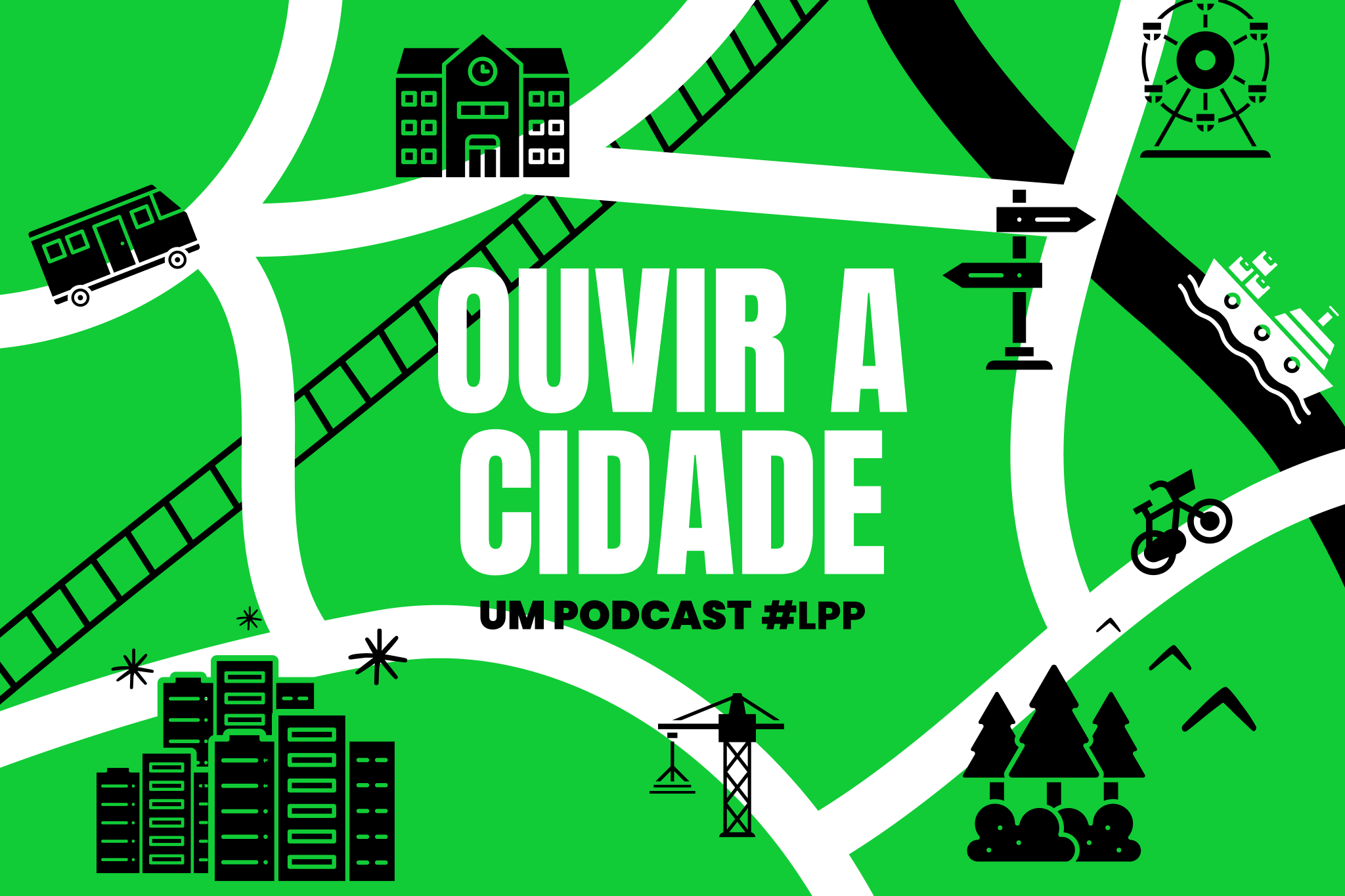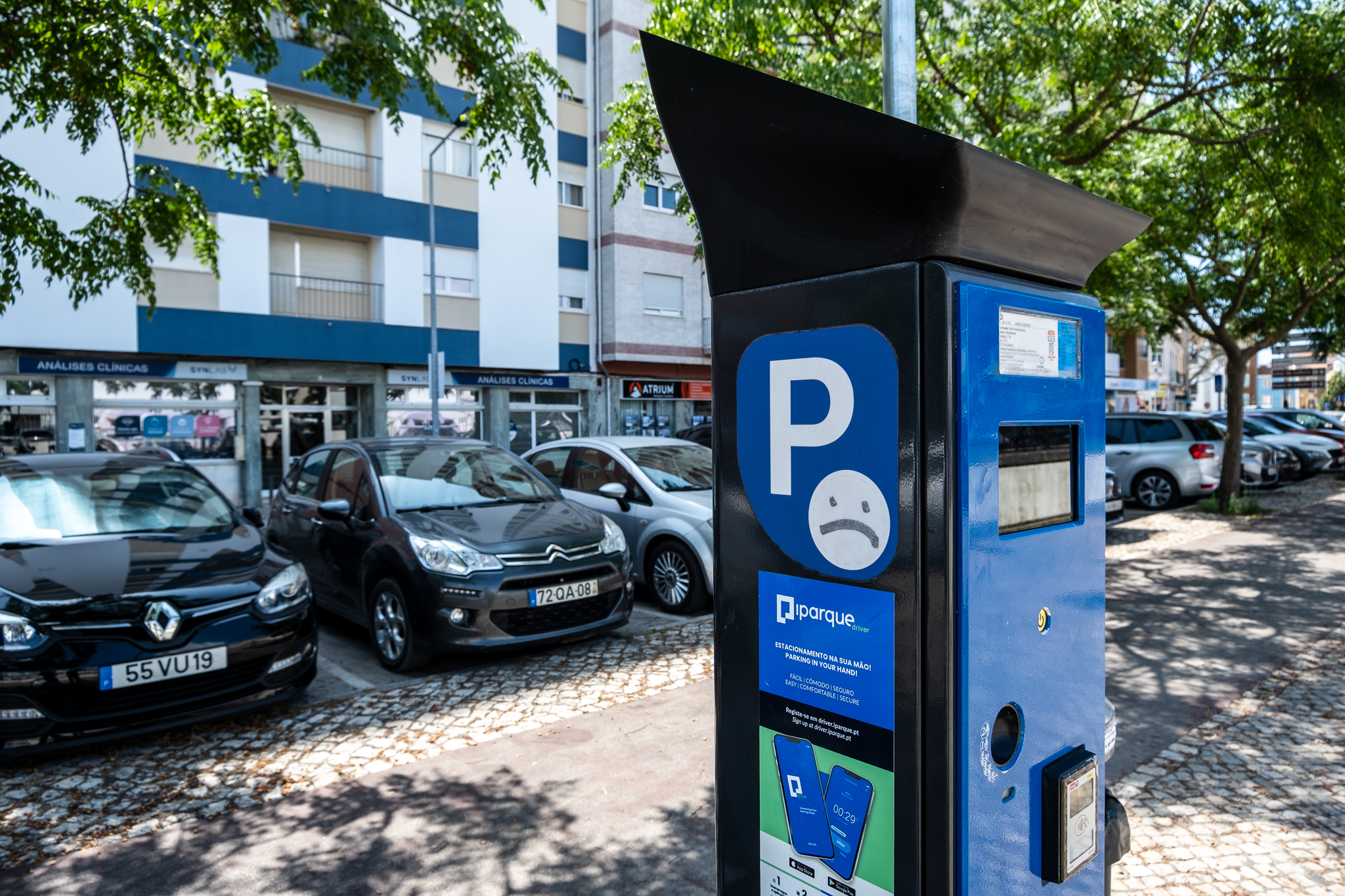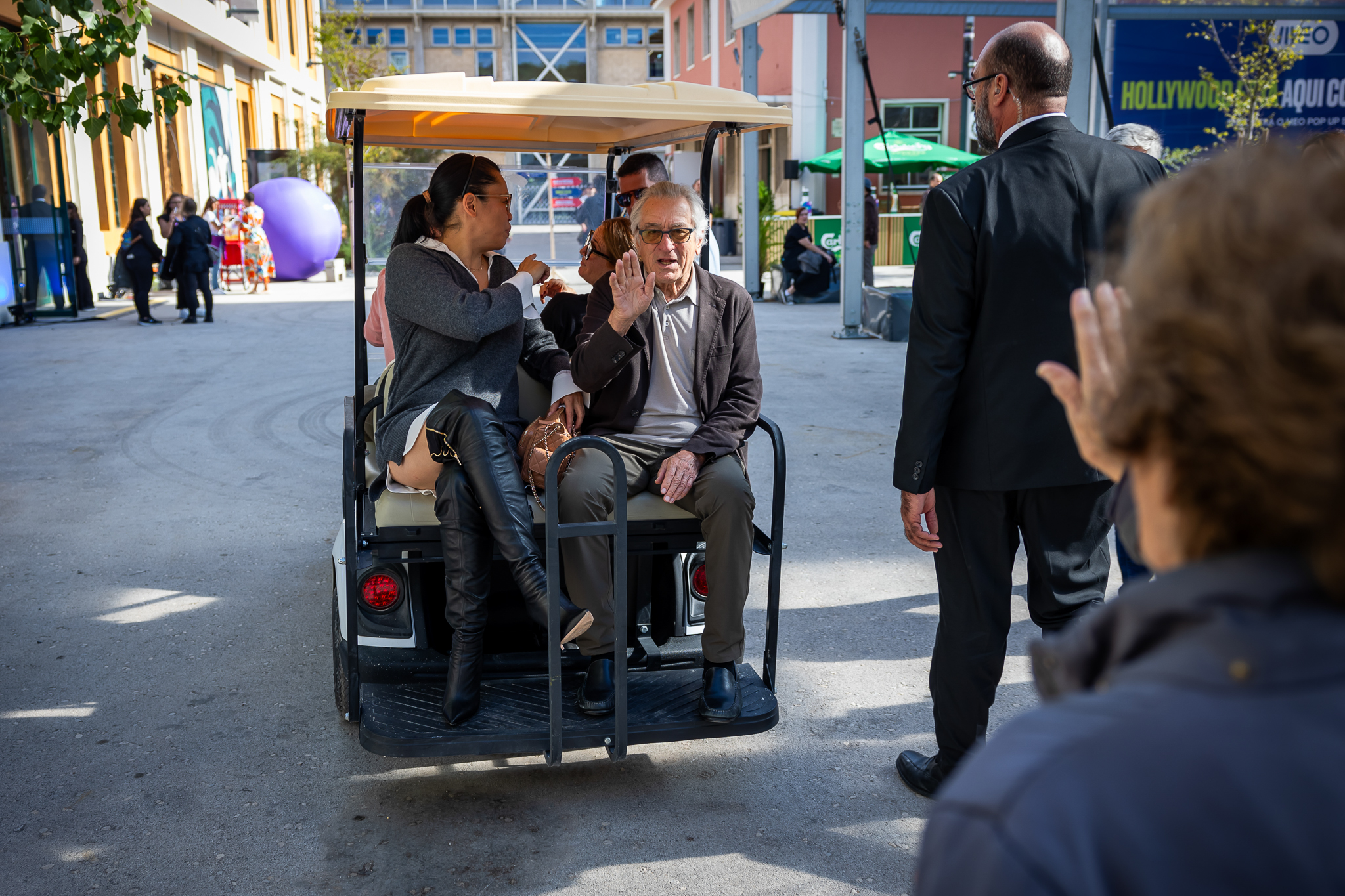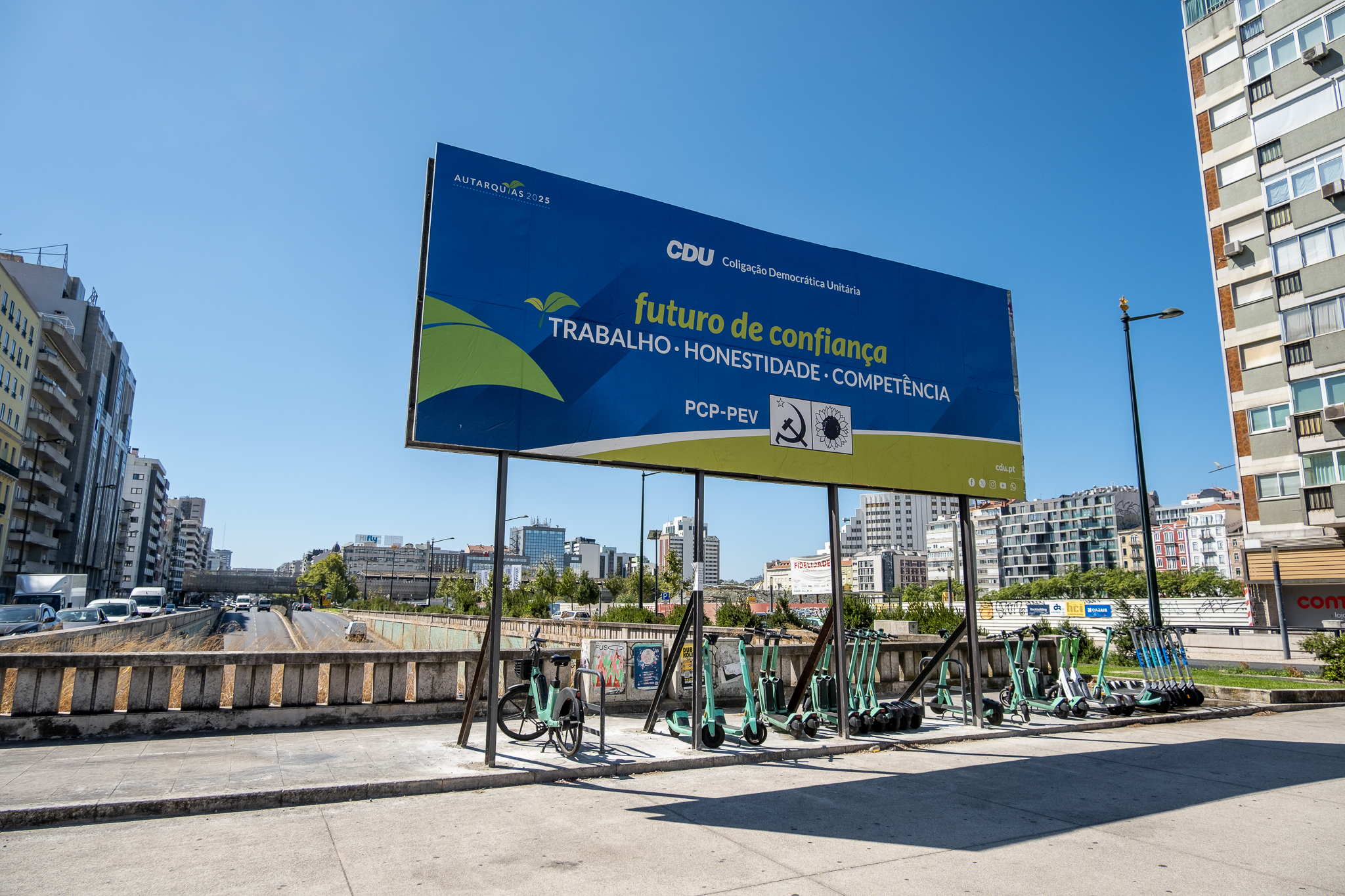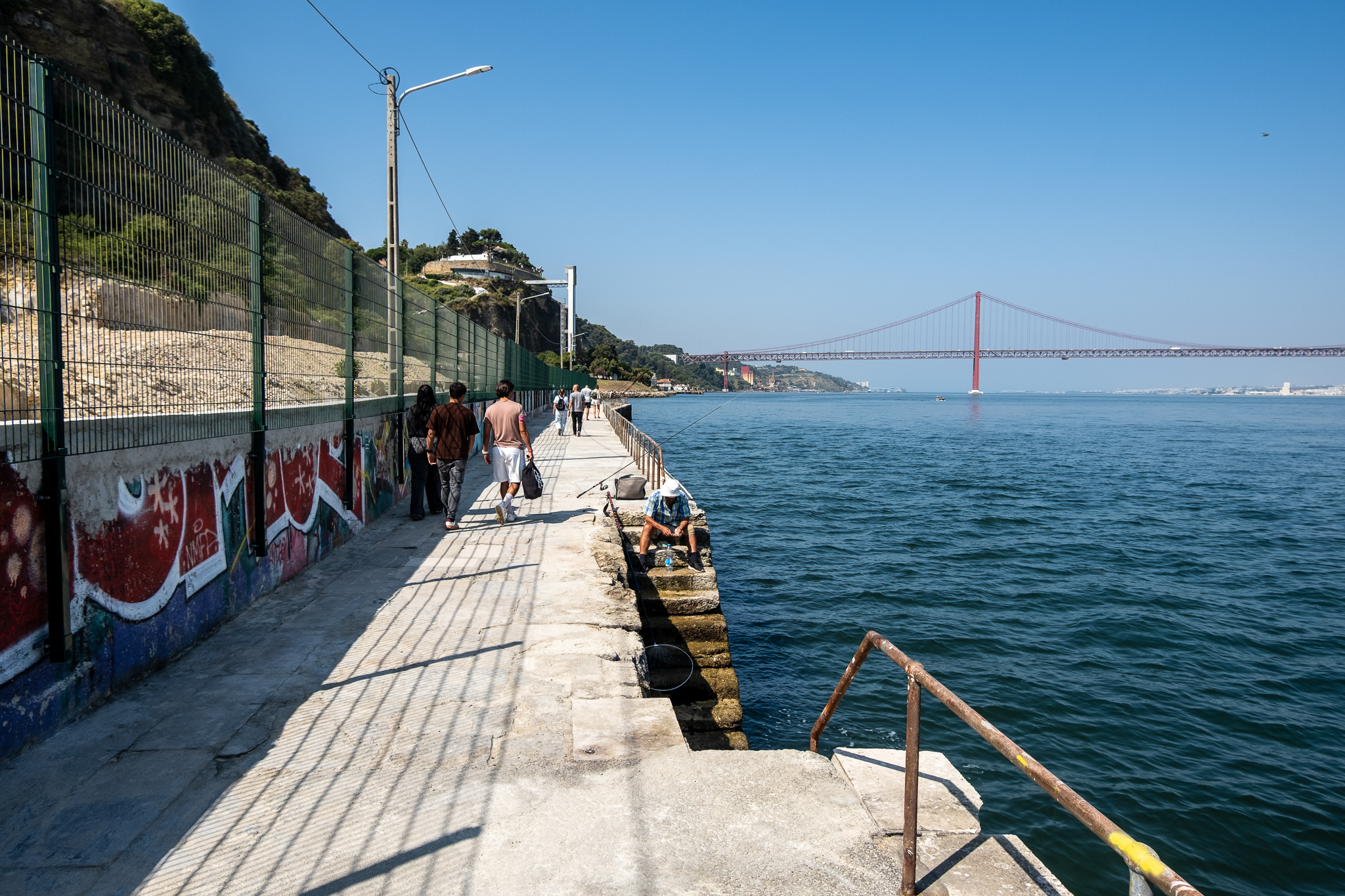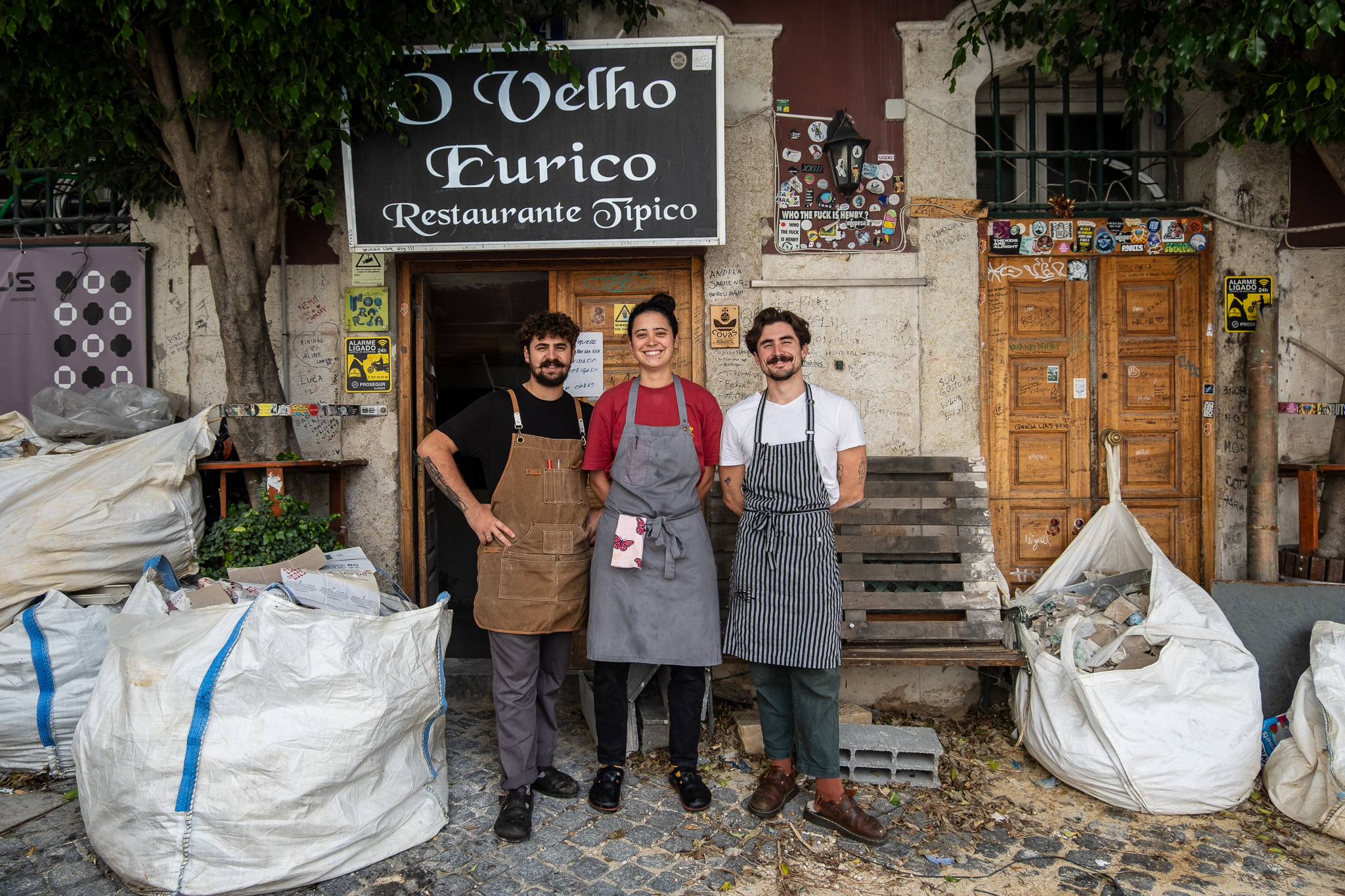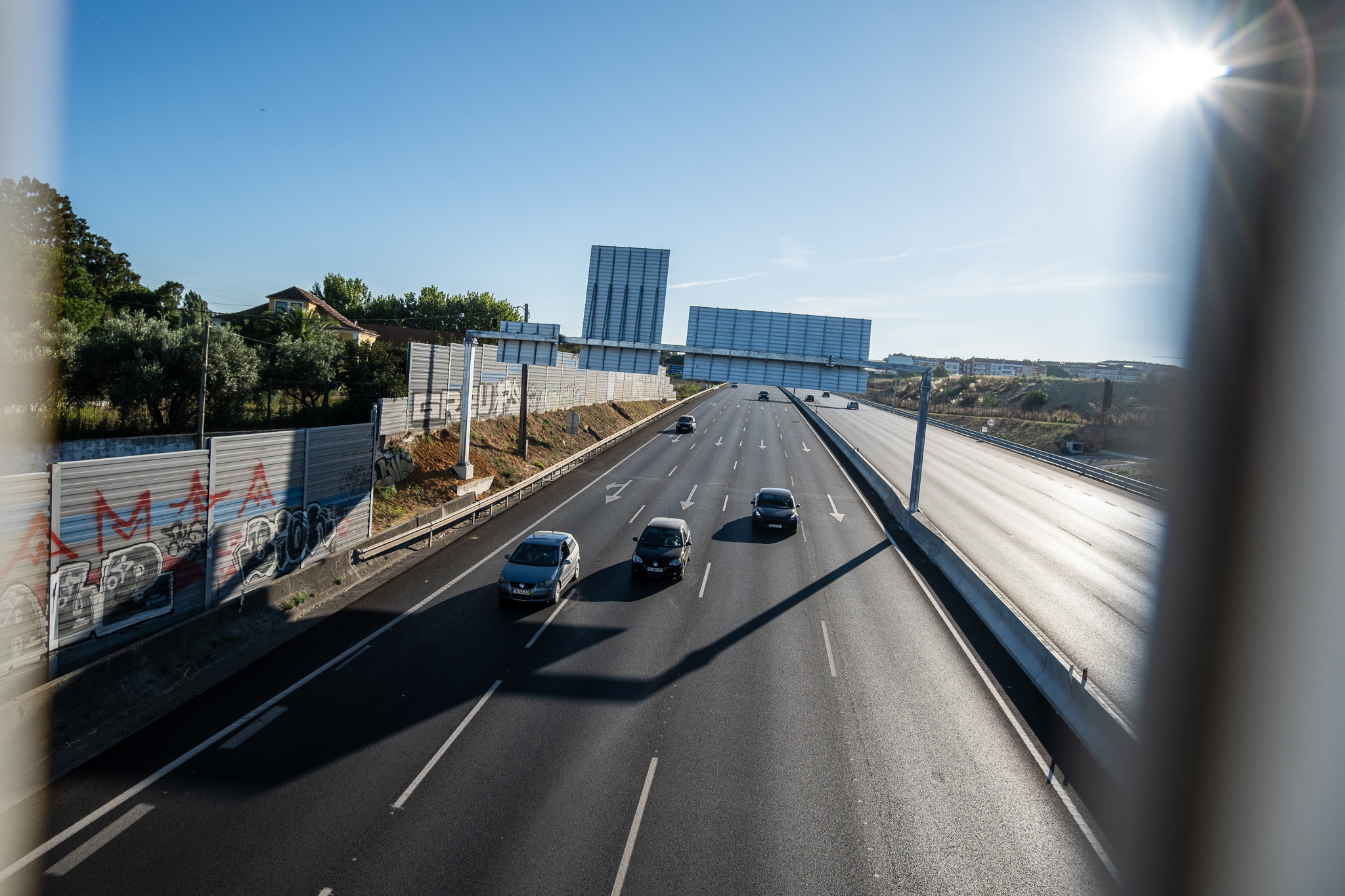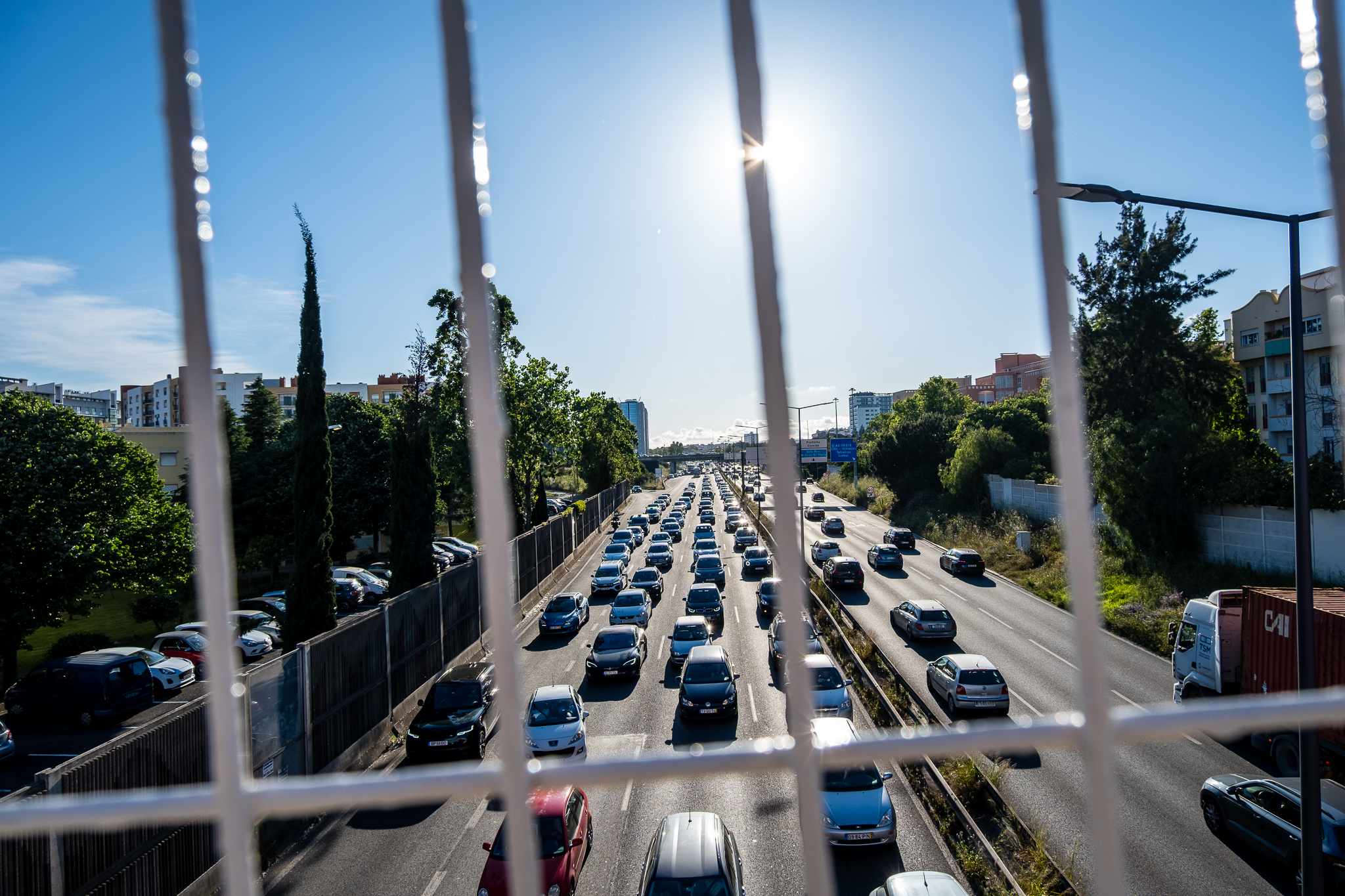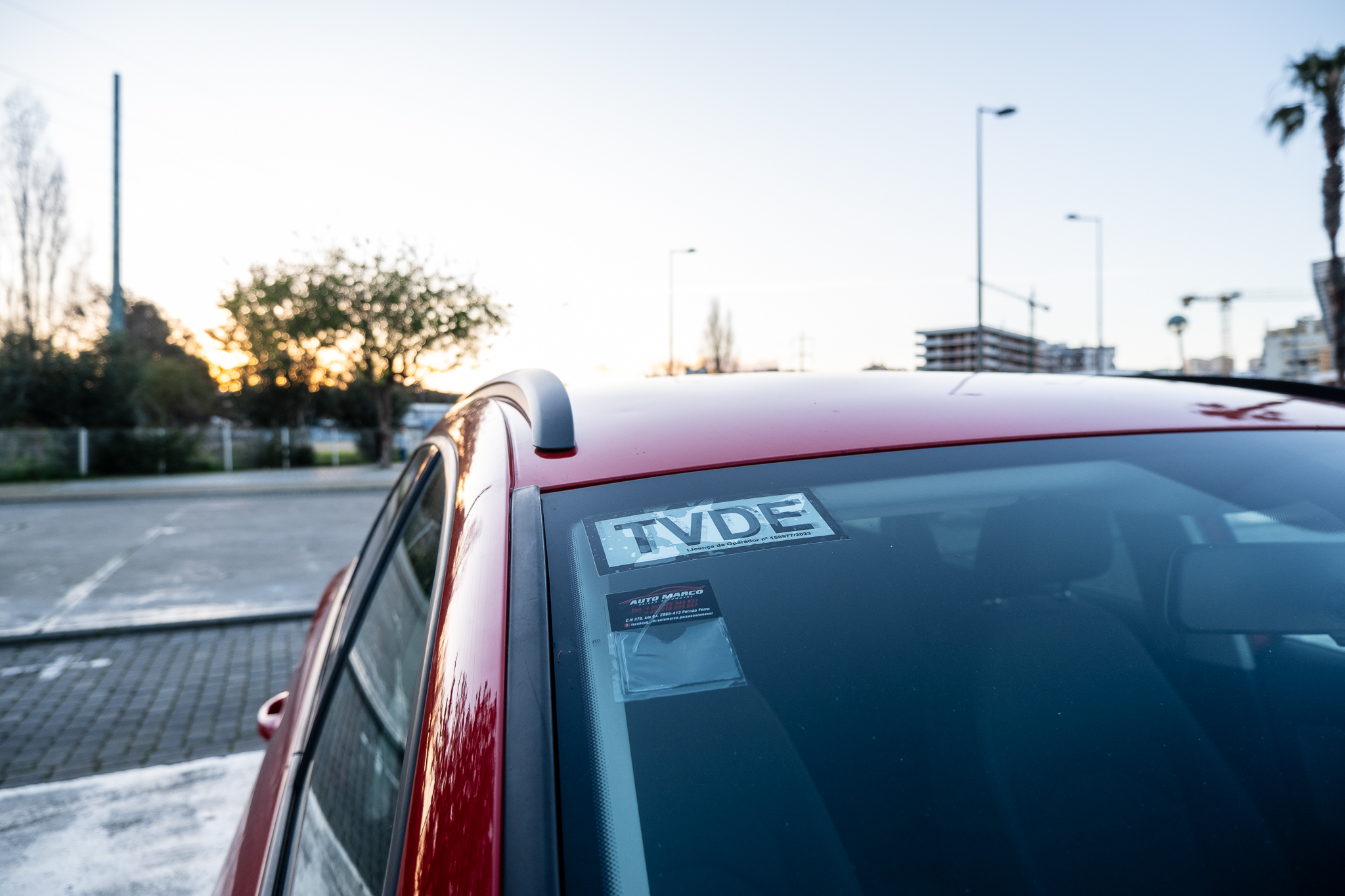We read the proposed budgets of Lisbon City Hall, EMEL, Carris, and SRU and present their outlines.

It's budget time in Lisbon. Lisbon City Council (CML) and the municipal companies have their budget proposals for 2022, which now have to be discussed in a City Council meeting and finally approved by the Municipal Assembly. In these documents, to which Lisboa Para Pessoas had access, there is not only what CML and the respective companies expect to happen this year in the city, but also four-year projects.
As far as mobility and public space are concerned, there are four budgets that are important to know: that of CML, that of EMEL - the municipal mobility company -, that of SRU - the municipal public works company -, and that of Carris - the municipalized bus operator. All in all, it is possible to get a more complete picture of what is meant by the buzzwords "diversifying mobility" or "sustainable city" that Carlos Moedas' executive presented publicly last January 5th.
The budgets are still proposals - the CML budget is presented by Moedas' executive and will be analyzed this Thursday, January 20th, by the opposition in a city council meeting and will later be voted by the City Council. The municipal companies' budgets are presented by these entities and follow the same procedural path - they are also being discussed this Thursday at the city council meeting.
The Municipal Budget is the basis for all other budgets. It is based on six pillars, including "a sustainable city," for which Carlos Moedas' executive has set aside 40.9% of the budget allocation. Within this axis, the Lisbon City Hall proposes to "diversify mobility", in a planned investment of 102.7 million euros. In the proposal, to which Lisboa Para Pessoas had access, the city executive reads that "the construction of a sustainable city requires the determined intervention of the municipal executive through a leading and transversal approach in the areas of Environment, Green Structure, Urbanism, Mobility, Public Space, among others".. About mobility, one of the bases of this sustainability, it is said that "the model of cities built for the car is giving way to the city built for people. Mobility is now shared, smooth and clean"..
"Lisbon needs a governance that knows how to lead, with balance, the transition from a car-based city model to a proximity-based city model and that leverages new mobility technologies. We will boost soft mobility modes, we will make it easier and more accessible to use public transport, we will promote the development of an integrated, connected, accessible, multimodal ecosystem, integrating active, public and shared modes of transport, that makes life easier for Lisboners, enhancing an efficient and comfortable mobility, focused on their needs and at the same time sustainable, counting on the involvement of companies, municipal entities and integrated in the Lisbon Metropolitan Area."
- CML
17 km of bike paths between 2022 and 2023

Between "cycling connections" and the cycling network itself, CML and EMEL estimate to invest around 13.7 million euros this year in cycling mobility projects - values that reflect not only the construction of bike lanes but also the requalification of the surrounding public space. The largest share belongs to EMEL, the municipal mobility company to which the municipality has entrusted the task of building bicycle lanes. EMEL expects to spend 12.4 million euros in 2022 and 8.1 million in 2023 to grow the cycling network in "over 17.5" kilometers in these two years. The company states that since 2018 it has been responsible for 39 kilometers of bike path and that only in 2021 built "a remarkable 25 and a half kilometers".
EMEL has some new bike lanes under tender at the moment. This is the case of Avenida Egas Monizwhich will create a better connection between the axis of Avenida Lusíada and Avenida dos Combatentes, connecting them to Cidade Universitária - the tender is currently being contracted. Also under contracting phase is a bicycle path on César Oliveira Streetconnecting the northern part of Telheiras to the Quinta do Pizany do Lumiar area through the Continente commercial area. The bike path that will connect the Pina Manique to Calhariz de Benfica traffic circle had the contest cancelled due to procedural flaws, but is still in the pipeline.

Avenida da Índia, Avenida das Descobertas or the connecting Avenida Marechal Gomes da Costa to Alameda dos Oceanos should be other projects to be carried out in these two years. Awarded is already green bridge and bicycle path under Almirante Gago Coutinho Avenue - should cost 2.6 million Euros and will resolve the unevenness of this avenue from Avenida do Brasil; but there is no news about the bicycle lane on Gago Coutinho, which EMEL had planned for this year.
Through the Environmental Fund, the Lisbon mobility company will continue the project of intercity bike pathstogether with the neighboring municipalities of Oeiras, Odivelas and Loures. Therefore, the projects for Avenida da Índia and Avenida das Descobertas should go ahead, as they will serve to connect Lisbon to Oeiras through the Algés traffic circle; the connection to Odivelas, will make the bicycle path in the Calçada de Carriche happen. In Loures, there will be two points: on one side, the bridge over the Trancão River which is already under construction and should be completed this year; the other will be between Olivais and Moscavidethrough the Rotunda Matilde Bensaúde/Estrada da Circunvalação.
"Reflecting - and contributing to - the small cycling share in Lisbon's modal choices, the city's bicycle path network was, until recently, incipient - the goal of building a convenient network of such infrastructure is still ambitious. And it's ambitious not only because there's still a long way to go, but also because of the complexity involved in the execution of these roads. The difficulties that, in some neighborhoods of the city, surround living with the automobile are well known - they are old areas, with vibrant life long before the emergence of these vehicles and without the slightest preparation for the massification of their use and democratization of ownership."
- EMEL
On the House side, the executive intends between 2022 and 2025 "harmonizing active mobility with the city" through a "safety program for smooth mobility", from "information campaign and involvement of lisboans in active mobility"and the "redesign of Lisbon's cycling network, focusing on safety, comfort and functionality for cyclists and pedestrians, redesigning problem cycling lanes (e.g. Avenida Almirante Reis) and presenting viable alternatives".
About Almirante Reis, it should be remembered that in press statements by the end of 2021, the councilman for mobility, Ângelo Pereira, explained that the local authority's objective is to "adapt the bike path and requalify Avenida Almirante Reis, giving this fundamental axis of our city the quality and urban dignity it deserves". "We are working in parallel on a project to requalify the entire Avenida Almirante Reis, from top to bottom, door to door, not only at the level of circulation, giving effective priority to pedestrians and people with reduced mobility, but also investing in new solutions for parking, and above all, in the qualification of the public space, giving Avenida Almirante Reis a clean face".revealed.
The plans for Avenida Almirante Reis do not appear detailed or budgeted in the documents referring to this 2022. However, it does mention the city council's desire to, within a four-year timeframe, develop in this axis a Avenue of Multiculturalism. This intention does not fall under the pillar of sustainability, but is nonetheless pertinent to a more global vision of that artery, which is well known for its cultural diversity. We will try to create this Avenue of Multiculturalism "in articulation with partner entities in the field, to hold events in defense of human rights, namely of refugees and migrants, minorities and the most vulnerable communities, but also to strengthen the fight against racism and all forms of discrimination".
Zero for GIRA docks, 100k for BiciParks

This year, the EMEL set aside zero euros for the acquisition of new docks to expand GIRAbut the company still has about 70 stations to make available to users "throughout 2022". "Today, the city has 102 active stations and EMEL already has in its possession the necessary equipment for an expansion of the network of stations exceeding 67%. In fact, 43 of these stations are already installed on the ground, awaiting their activation, which has been delayed due to electricity supply disruptions, while another 26 are awaiting definition of their future location and installation., reads in the Activities Plan and Budget of EMEL for 2022-2025.

The GIRA stations that are already installed and awaiting opening should be operational in the first half of 2022, starting in late January/early February - as EMEL had already announced to the press. In the coming years, the company foresees a pace of expansion of the GIRA network "more moderate, contemplating 20 new seasons per year"with an expected annual budget of 480,000 euros.
As for bicycles, EMEL plans to invest 345 thousand Euros per year between 2022 and 2025 in the purchase of new vehicles for fleet expansion. The municipal mobility company also states that "the network expansion planning also includes the installation of outposts, in three different locations in the city, for maintenance operations and cleaning of the bicycleshoping, in this way, "constant travel to the central operating base will be avoided, which will help to substantially increase service levels and system availability". with the existing bicycle fleet.
| Project | 2022 | 2023 | 2024 | 2025 | Total |
|---|---|---|---|---|---|
| GIRA Stations | 0 | 480 000 | 480 000 | 480 000 | 1 440 000 |
| GIRA Bikes | 345 000 | 345 000 | 345 000 | 345 000 | 1 725 000 |
| Decentralized bases GIRA | 60 000 | 0 | 0 | 0 | 60 000 |
| BiciPark Expansion | 100 000 | 100 000 | 200 000 | 205 000 | 605 000 |
EMEL expects an income of 850,000 euros from GIRA this year and about 1.2 million annually from the bike-sharing system over the next three years. These estimates are based on GIRA's usage history, "which has seen an increasing trend"and also in the planned expansion plan, since it is admitted that, on the one hand, "each new station generates interest, and thus demand, from a new set of users" and, on the other hand, the increased availability of bicycles "will tend to be reflected in greater utilization".
EMEL maintains its commitment to the GIRA and to cycling mobility while, in its plan, it foresees to extend its parking regulations to the whole municipality of Lisbon by 2025, which will translate into new surface, underground or silo parking spaces (some of them with a deterrent function) and into reinforced enforcement of abusive parking. The organization of car parking generally includes the availability of bicycle racks. EMEL also provides covered and secure places for bicycles through its BiciParks. For the next four years EMEL speaks only of a "network expansion" of BiciParks, having programmed 100 thousand euros per year in its budget for 2022, the same amount for 2023, doubling that budget for 2024 and 2025.
The Lisbon City Hall, for its part, included in its budget the will to "add GIRA bikes to monthly passes, promoting door-to-door mobility" - a desire that EMEL already had express for September/October 2021and then postponed to the first quarter of 2022. The idea, remember, is to include GIRA in Navegante.
Public space: Riverfront, Chiado and São Sebastião
In terms of public space, CML intends to give continuity to requalification of the public space on the Frente Ribeirinhaspecifically the requalification of the Infante Dom Henrique Avenue and the reconstruction of Santa Apolónia SquareThis project depends on the new drainage system in the area. The requalification of Avenida Infante Dom Henrique, that Lisboa Para Pessoas showed here, is priority and should be ready in 2024. It will have an allocation of 4.5 million euros from the local authority budget, which will be given to EMEL for the execution of the work. EMEL estimates spending 800 thousand euros in 2022, and 2.8 million euros are budgeted for 2023 - this should be the year of the execution of the construction work itself.

For the program A Square in Every Neighborhoodthe math is done without Seven RiversThe square will be renovated by early 2024 with about 8 million euros. For other projects, between CML and SRU, 2.4 million euros are planned - the main priority will be the São Sebastião Square. This project, which was scheduled for 2021, is pending with a "possible need to launch new procedure" of public tender.
On São Sebastião Square reorganization of the road, circulation and crossing network is planned, a enlargement of public pedestrian space "to resume the reading of the square as a whole, by highlighting the built front from the São Sebastião da Pedreira Church to the Sá da Bandeira and Vilalva Palace"and the introduction of cycle paths, as well as a GIRA bicycle station in the square. According to the SRU's Plan of Activities and Budget for 2022-2026, the works are scheduled to be completed in 2023.
For the new squares to come to life, CML intends to implement the program There's life in my neighborhoodseeking to create synergies between the requalified public space and "other local scale activities and spaces: commerce, education, health, culture and green spaces"
In Parque das Nações, where the World Youth Day 2023The public space now needs to be prepared. In this 2022, it is planned to sign the contract for design/construction of the "rehabilitation of the infrastructure of the Beirolas Landfill for the recovery of safety conditions in the operation of the system" and "modeling and infrastructure of the intervention area with a view to creating conditions" for the Journey's realization "on the surplus areas of PP6 and the Beirolas Landfill".
The Lisbon City Hall also intends to "develop the Urban Project of the new centrality of Chelas, starting a process of radical transformation of the model implemented in Chelas, for an innovative area, qualified, integrating and promoting new social opportunities". The municipality wants this Urban Project to be driven "by a co-decision process, mobilizing all the stakeholders, and of medium term, which intends to be emblematic of the new city that Lisbon can be in the future".

For other public space requalifications, CML has budgeted nearly 300 thousand euros in 2022. For Lisbon's Pedestrian Accessibility Plan and to make transportation interfaces more inclusive, there is a budget of nearly 440 thousand Euros. According to the electoral program presented, it is the municipality's will "develop a continuous, comfortable and inclusive pedestrian network", "reinforce interventions in public space, promoting a better balance between pedestrian areas and those allocated to road lanes and parking spaces"and yet "implement a comprehensive plan to eliminate architectural barriers in public space, street furniture and public transportation".
Returning to major projects, the pedestrian bridge that would connect the Gulbenkian directly to the Gonçalo Ribeiro Telles Urban Park (Praça de Espanha) is expected to start construction this year, and should be completed in 2023, according to SRU documentation.

SRU will also proceed with the requalification of the Santos Dumont Avenuenext to the Plaza de España. It is intended to ensure two traffic lanes in both directions, complemented with a wooded central separatorAccording to the SRU, the goal is to ensure a road connection to the IPO under the overpass of Avenida dos Combatentes, to ensure the opening of a new street that connects Avenida dos Combatentes to Rua Dom Luís de Noronha, and to plant trees in Rua Actor Alves da Costa, ensuring framing and protection of the Belt Line. According to the SRU, the goal is also to "ensure mobility and universal accessibility, enhancing by design and construction solution, the appropriate pedestrian, cycling and road circulation", e "minimize the presence of automobile parking". In 2022, the SRU expects to complete the execution project and launch the tender for the construction work.
ZER ABC but only with two works
The Reduced Emissions Zone in Avenida, Baixa and Chiado (ZER ABC) may have been left in Medina's drawer and Moedas has not yet said whether he will take it out. However, some public space works that were integrated in the ZER are progressing by the SRU offices.
This is the case of Avenida da Liberdade - in 2022, the execution project is expected to be concluded and the launching of the construction tender for the work to be concluded in 2023. This is only the first phase: the requalification of the public space and infrastructures of Avenida da Liberdade, with the restoration of the "natural" direction of traffic on the side lanes, the repaving of the avenue, the introduction of a bicycle lane, and the creation of accessible pedestrian sidewalks. Phase two, which concerns the recreation of the Public Promenade next to the Restaurants, "awaiting priority confirmation" and is "under study".

In Chiado, the launch of the contract and the beginning of the work for the Two Churches Square to make it pedestrian-only. The sidewalk will be renewed, the streetcar line will be revised, areas will be created for shared circulation between vehicles and pedestrians, new street furniture will be installed, and pedestrian crosswalks will be lowered and signaled. The project has already been designed and is expected to be concluded next year, in 2023. As for the Misericórdia Streetthat connects Largo de Camões to Largo Trindade Coelho, would give more space to the pedestrian but "awaiting priority confirmation" at this stage.

More green spaces
The City of Lisbon proposes "create more proximity green areas, as a priority in areas of need, investing in co-decision processes at the neighborhood level that allow the requalification of the public space based on proposals and ideas from the local population". There are several urban parks and other green areas to accomplish in the city and this year there should be news about a number of them. To wit:
- next to Calçada de Carriche, is about to be born Encosta do Olival Park - Alcoutins Trail. It should be ready in 2023, with 800,000 euros this year and 40,000 next year;
- in Carnide, the Vale do Forno Urban Park should take shape by 2026 with an estimated budget of 7.6 million euros for the various years.
- the prolongation of Vale (or Quinta) da Montanha Urban Park is targeted to be completed in 2024. The project has 1.9 million to start this year, another 1.7 million in 2023, and 17,000 euros in 2024.
- a New Feira Popular, a project started in 2016, should be completed in 2022. After having already spent 3.8 million euros, the Lisbon City Council has budgeted for this year about 2 million euros;
- in Penha de França, the Snail Gardenwhich resulted from the will of the people through the Participatory Budget, should be ready by the end of this year with 1.2 million euros;
- the conclusion of the Alcântara Valley Green Corridor with the last phase of the project - which includes the reprofiling of Avenida de Ceuta, the extension of the bike path to the river, the construction of the Casal Ventoso Linear Park, the reopening of the Ribeira de Alcântara from the WWTP, and a project for the urban integration and social miscenization of the Quinta do Cabrinha and Loureiro neighborhoods - is planned until 2024. It is one million for 2022, and 3.4 million for 2023.

On the other hand, the City of Lisbon will seek "to reinforce urban trees in public spaces, squares, squares and streets of Lisbon. To this end, the launch of the project A Tree Around Every Cornerwith 19.2 thousand euros, the continuation of the project Life Lungs with 192.9 thousand euros and the CONEXUS European project84.5 thousand euros. About pruning, often done without technical knowledge, the municipality intends to professionalize the pruners "services dealing with the planting and maintenance of trees in the city".
There is also the will to create platform Sustainable Lisbon, “a city mobilization forum to co-decide the city's shared sustainability goals and will mobilize businesses, confederations of all sectors with relevant activity in the city, NGOs, neighborhood associations, the city's universities and representatives of schools at all levels of education"and to realize the Municipal Strategy for Adaptation to Climate Change (EMAAC)which was under public discussion in 2021.
In parallel, the municipality intends to "dissemination of green roofs and green roofs and vertical gardens in the city"create the program Cooling Down the City, "realizing micro-climate regulation projects and transforming urban squares into green and cooler squares and increasing the presence of trees on streets, to mitigate the urban heat island effect", develop a Roadmap for Circular Lisbon, "defining the strategic pillars of action and the goals to realize a circular economy model in the city by 2030"and extend the network of urban gardens and agricultural parks. We also highlight projects in the field of energy, a key area in the field of sustainability.
New buses, extension of streetcars and cell phone payments

In its Activity Plan and Budget for 2022, Carris looks at the current year but also at the 2022-2025 outlook. Here are some highlights:
- renew its fleet of buses and streetcars with "190 new vehicles expected to enter service between 2022 and 2025"of which 67 are expected to start operating in 2022 (43 normal buses running on natural gas and 24 articulated buses also running on natural gas). The remaining 123 vehicles to be purchased by 2025 could be natural gas, 100% electric or hydrogen-powered. "The investment in the acquisition of a new fleet is intended to implement the process of progressive and continuous renovation of the fleet that has ended its useful life, which uses older and more polluting technologies, and which, due to its age, will be targeted for scrapping in the near future, and therefore its replacement cannot be postponed".says Carris.
- in relation to new streetcars, which will be 15 articulatedthere is "expected date of receipt and commissioning of five streetcars at the end of 2023 and the rest during 2024". These new 15 streetcars are intended for the 15E career, "in order to adequately respond to the extension of the tramway network, which is planned, in a first phase to Jamor and Santa Apolónia Station". "It should be noted that the expansion of the current Collective Transportation on Own Site (TCSP) network, on the Algés - Santa Apolónia axis, is a strategic objective of the development of the surface public transport network in Lisbon, and a response to the new demand requests registered in this area of the city, with reinforcement of articulation and modal complementarity"writes the company. The expansion of the 15E streetcar makes sense in conjunction with the LIOS project in Loures and Odivelas.
- for the period between 2022 and 2025, Carris will seek the "ticketing dematerialization solutions"such as payment by cell phone or debit/credit card, or open the "possibility of ticket sales by third parties with a view to the growth of mobility solutions as a service".
- in 2022, the Carris foresees the implementation of a shared bicycle system for the commuting of its employeesin the scope of the implementation of the Active and Sustainable Mobility Plan for Carris;
- This year, Carris plans to extend the 24E streetcar, which currently connects Praça Luís de Camões to Campolide, to start running this route in Cais do Sodré;
- for 2021-2025, Carris seeks "create new appropriate solutions, as is the case of the Madrugada network" e "continue the testing of the transport-on-demand service, which was in pilot in 2021" e whose last day Lisboa Para Pessoas followed.

